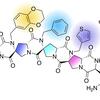Temple University is actively seeking business partners and entrepreneurs to advance discoveries created by our researchers. Below are a few emerging technologies.
Reversal Agent for Opioid Overdose, Dr. Eugen Brailoiu – Temple CSAR; Dr. Cristina Brailoiu – TJU Pharmaceutical Sciences
Problem:
- Ultra-potent synthetic (UPS) opioids (fentanyl, carfentanil) are severe public health risks.
- UPS opioids are 50 to 100 times more potent than morphine or heroin.
- 75% of over 109,000 overdose deaths in the US in 2023 were linked to fentanyl*.
- UPS opioids are cheap to manufacture, often mixed with opioids such as heroin, and can appear in counterfeit pills such as oxycontin.
- Death occurs by respiratory depression/apnea or by decreased neurological function.
- Current treatment regimens are not effective enough.
Invention:
- Therapeutic - Reversal Agents for Ultra-Potent Synthetic (UPS) Opioid-Induced Overdose and Respiratory Depression
The Solution:
- A new intervention for UPS opioid overdose, such as fentanyl, is required to overcome their potency and rapid central nervous system infiltration.
- Naloxone is insufficiently effective to address UPS overdose events in the current climate.
The Market:
- A new UPS reversal agent is needed by federal, state and local governments. Emergency responders need the agent to keep the community and themselves safe from accidental or intentional exposure. Hospitals, primary care clinics, and addiction outreach services are also in need of the new UPS.
- This agent could be available OTC or by prescription to at-risk households.
The Development:
Provisional patent application entitled: Reversal agents for ultra-potent synthetic opioid-induced overdose and respiratory depression. [C2023-034]
Intravenous Needle Insertion Device, Dr. Eric Gokcen – Temple Orthopaedics & Sports Medicine
The Problem:
- The insertion of the catheters and needles can be difficult, painful, and anxiety provoking to both the healthcare provider and the patient.
- Unstable or “rolling” veins that move away from the needle at the atttemped puncture result in a miss, or worse, a partial insertion with a resulting hematoma.
- Safety is a concern with sharp medical instruments. The healthcare provider often needs to stabilize the vein with their non-dominant hand, close to the insertion site. This increases the risk of an accidental needle stick.
Invention:
- Intravenous Needle Insertion Device with Stabilizing Strap
Solution:
- The Intravenous Needle Insertion Device is inexpensive.
- It is estimated to cost approximately $0.15 per unit.
- There is a clear need for a device that can stabilize the vein and guide the IV needle directly into the vein. No such device currently exists.
- This will minimize the anxiety, pain, and potential complications of unguided IV needle insertions for the patient and the healthcare provider,
- The healthcare provider will also minimize the possibility of an accidental injury to themselves, making the IV catheter or needle insertion safer.
Market:
All healthcare providers who insert venous catheters or draw blood from patients.
Status:
PCT application filed 2023 [C2023-023].
Contact the iNest
Temple researchers are continuously developing new technology that may be unpublished, we encourage you to contact us if you have specific business needs. Our office will work with you to explore whether those needs align with any Temple research, technologies, or other collaboration opportunities.

